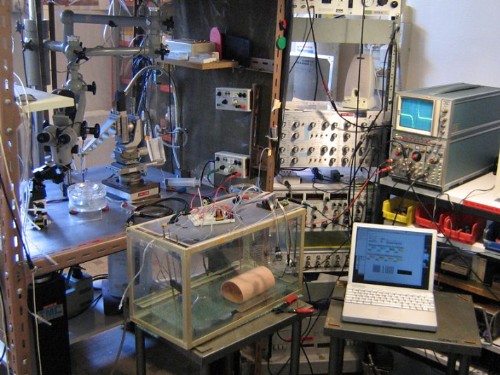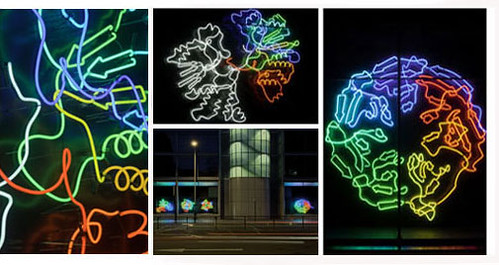Jim Spadaccini, director of Ideum, has created a special search engine (a Google Co-op) for museum blogs. Try it here.
Jim Spadaccini, director of Ideum, has created a special search engine (a Google Co-op) for museum blogs. Try it here.
The Institute for History, Philosophy and Ethics of Medicine of the University of Mainz is inviting to a symposium on “Remaking the Future of Health? In Search for Individual and Public Health in the Age of Genomics”, 29 – 30 June 2007. See more below:
Many publich health officers and historians of medicine maintain that the eradication of smallpox is one of the greatest public health achievements of the twentieth century. In this meeting series at the Wellcome Trust in London, a number of health managers and field personnel who were involved in the smallpox eradication programme of the 1970s will present their own participants’ perspective of the campaign. All seminars take place on Wednesdays 1-2.30pm in the Wellcome Trust’s old building, 210 Euston Rd.
BBC Radio 4 launches a new series in 30 parts about the development of Western medicine, from the ancient Greeks to the 20th century. Written and narrated by Andrew Cunningham, research fellow in Dept of HPoS, Univ of Cambridge. Starting Monday 5 February 2007 at 3.45pm and then every weekday for the next six weeks. More info here. (thanks to Jette Nielsen for the tip).
David Smith and Norval Strachan at the University of Aberdeen are currently preparing a grant application for a three-year project on historical trends in poultry-related Salmonella and Campylobacter food poisoning 1980–2005. If the grant application is successful the project will begin in September 2007. The project would involve oral history interviewing, archival research, collecting and analyzing numerical data, writing papers and monograph on the subject. The two grant application submitters are interested in candidates holding a relevant PhD. The deadline for submission of the application is 1 March 2007 and interested persons should therefore respond as soon as possible to David Smith, Senior Lecturer in the History of Medicine, King’s College, University of Aberdeen, d.f.smith@abdn.ac.uk.
This year’s bi-annual meeting of the International Society for the History, Philosophy and Social Studies of Biology (ISHPSSB) takes place in Exeter, UK, 25-29 July 2007 — hosted by The Centre for Genomics in Society.

The ISHPSSB (“Ishkabibble” among friends) meetings are informal and relaxed summer meetings where a diverse crowd of people from all quarters of life science studies meet for 4-5 days. When I began to attend these meetings back in 1989 they were dominated by historians and philosophers interested in evolution (Darwinism), but over the last 15 years the programme has become much more varied. For an overview of papers relevant for the “Biomedicine on Display”-theme, see a report from the 2005 meeting in Guelph here.
All info you might ever dream of asking for can be found on the conference website: http://www.ishpssb.org/meeting.html. Deadline for online abstract submissions is 15 February.
The current issue of Dialogue, the Leeds-based online journal for contemporary art practice, edited by Michael Corris, focuses on how to develop “a picture of artists operating in and within the fields of science and technology”.

(Antony Hall, ENKI Prototype, 2006; from Dialogue issue 4, january-april 2007)
The special issue includes an article by Charlie Gere (“The Gay-Science Museum”; inspired by Nietzsche’s essay “Die fröhliche Wissenschaft”) on the problem of how “the tendency towards ‘experimentalism’ in the arts and in society more generally … could and should be represented in museums and other institutions”, and a symposium (“Expanding the Lab: A Conversation Between Artists Working with Science”) between artists and curators about their experience of working collaboratively with scientists and scientific institutions, e.g., how to access and utilise scientific knowledge in artistic practice.
Just want to draw your attention to an interdisciplinary conference on “Concepts of Infection” to be held 29-31 March, 2007 at the University of Bristol (UK). See below or:
http://www.bris.ac.uk/arts/birtha/conferences/concepts_infection/index.html
Given all these tens of thousands of public and private medical clinics around the world that all look the same — how can one separate the functional trivia from the truly chic. Now Bill T. at Cool Hunter has found the true nugget: Singapore’s The Clinic, which doesn’t look, smell or sound (or work) like any other clinic:

Upstairs, The Clinic offers a dining experience like no other. Dine from kidney shaped surgical pans, and drink through test tubes. The avant- guard menu is second to none and oddly enough well suited to the surroundings (from Cool Hunter’s website, better resolution pic here).
Spanning over 15,000 sq ft of space, The Clinic resembles an organized maze with pill shaped rooms interlocking into one another for easy access. The Clinic has two floors. The first fulfills your entertainment requirements, with a number of bars, a dance club, and merchandise store. The entire floor is clinic inspired, that is to say ‘hospital chic’ adorned. That’s where artist Damien Hirst comes in. His pop art graces the walls of The Clinic, whilst his vision goes even further. Syringes, drips, pills and hospital whites are the order of the day in The Clinics decor. This satirical look at medical chic is both stunning and entertaining.
This merger of medical museum, restaurant and art exhibition — “Think Damien Hirst on Prozac turned gourmet, and you get the idea” — is truly inspirational. We’ve been thinking of establishing a small restaurant in the former smallpox inoculation building in the backyard, the little yellow house that now contains 700 medieval leprosy skeletons and a large assortment of pathological skeletal specimens. So maybe this is the way forward … other ideas are welcome.
The Clinic’s own website is pretty inspirational too (– and thanks to Adam for finding the Cool Hunter).
I don’t know what to think about the neon artwork depicting proteins related to deadly diseases displayed in the windows of the Wellcome Trust’s headquarters on Euston Road in London:

The neon art “is mesmerising passers-by in the centre of London, and acting as a bittersweet reminder of the devastation of serious medical conditions”, says the Wellcome website, and continues:
Proteins play a key part in how our bodies interact with disease. The Structural Genomics Consortium, which the Wellcome Trust part-funds, has had a crucial role in identifying the structure of some important proteins related to human disease, including cancer, HIV, obesity and malaria. Understanding the structures offers potential targets for novel drugs to treat these conditions. London design team Graphic Thought Facility have constructed a colourful and thought-provoking display depicting a number of these proteins in bright neon signs that are attracting the attention of busy onlookers.
Decorative, okey — but “mesmerising” and “thought-provoking”?
© 2025 Emeritus.
